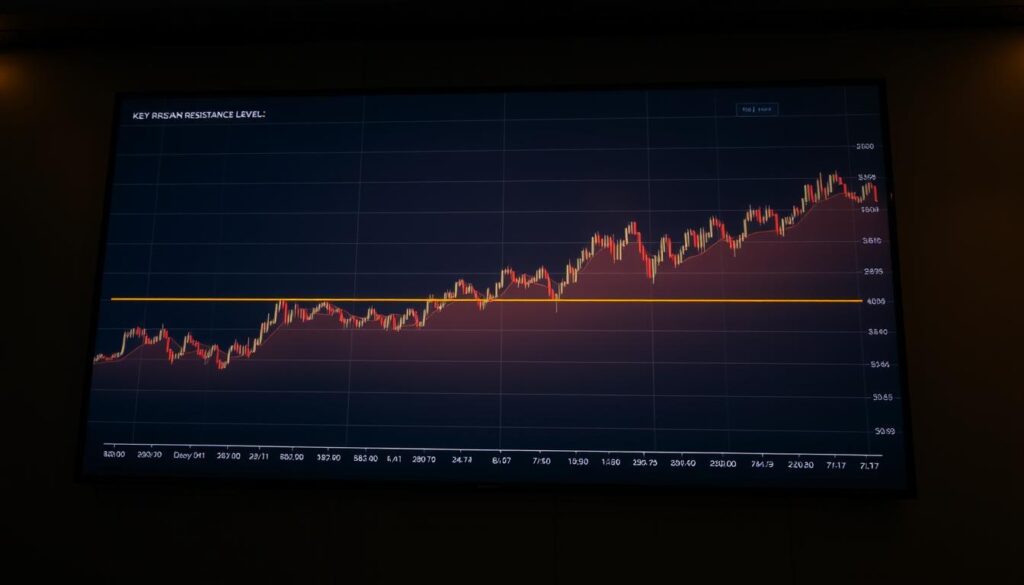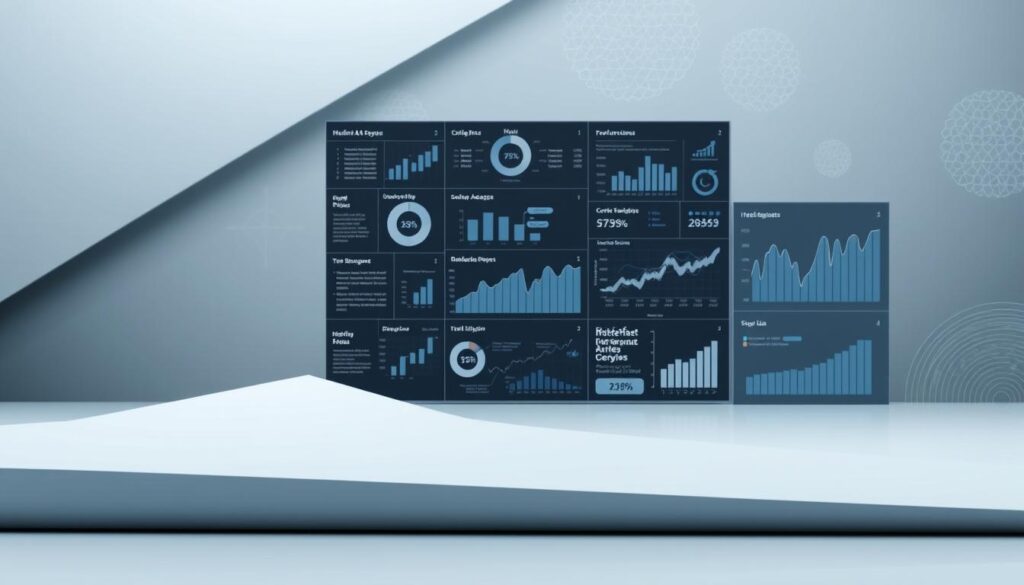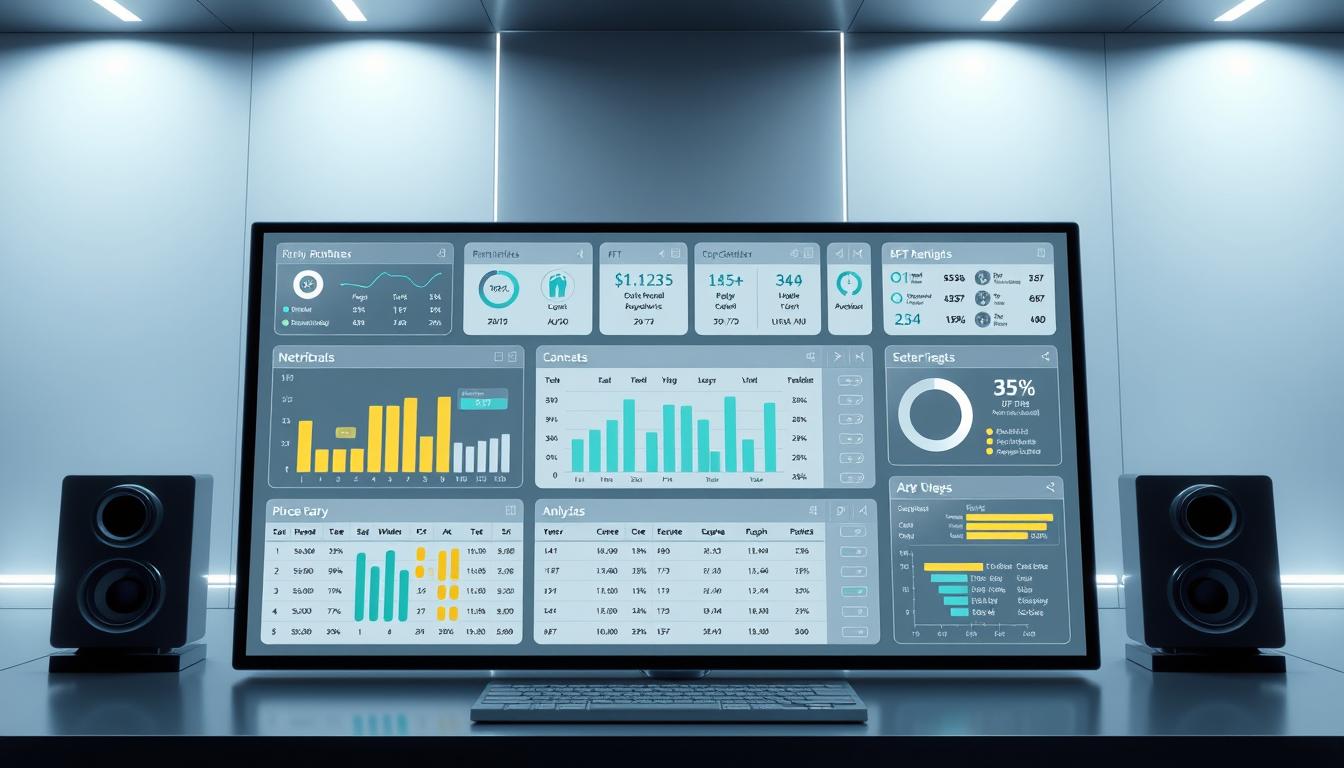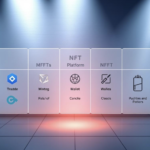Now Reading: Cryptocurrency Exchange Data Analytics Tools Explained
- 01
Cryptocurrency Exchange Data Analytics Tools Explained
Cryptocurrency Exchange Data Analytics Tools Explained
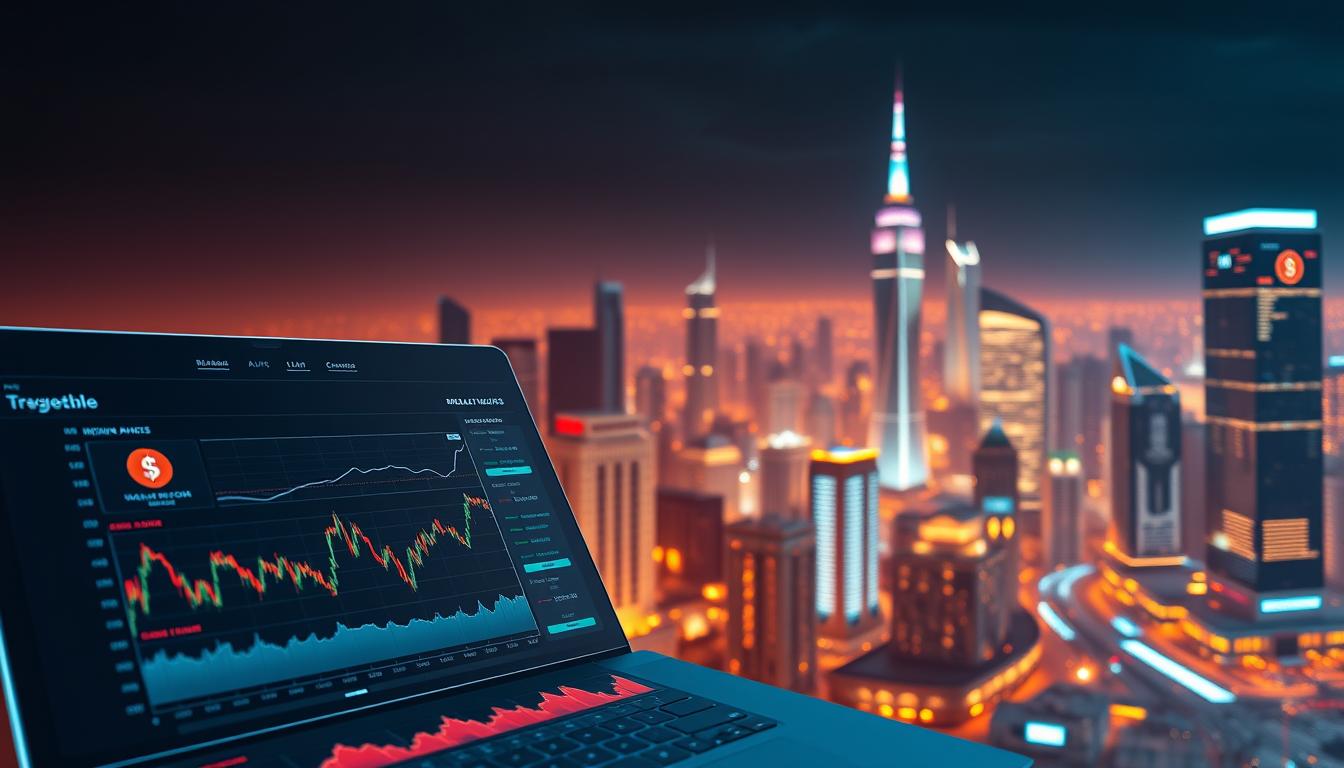
Digital asset markets require precise decision-making supported by real-time insights. Advanced platforms now offer specialized solutions to track everything from emerging opportunities to portfolio performance. These systems combine blockchain activity, social trends, and trading patterns into digestible formats.
Today’s landscape features four primary categories of resources. AI-driven trackers monitor automated trading agents, while specialized dashboards rank decentralized applications. Investors use airdrop discovery systems to find rewards, and governance analytics help assess decentralized organizations.
Top-tier platforms aggregate information across networks and exchanges. Customizable dashboards allow users to filter signals by asset type or strategy. Automated alerts notify traders about sudden price shifts or protocol updates, replacing guesswork with data-driven approaches.
Key Takeaways
- Specialized platforms track AI agents, NFTs, and governance metrics
- Real-time alerts and dashboards replace speculative trading
- Data sources include blockchain activity and social trends
- Tools cater to both short-term traders and long-term investors
- Customization helps users focus on specific strategies
Understanding Cryptocurrency Exchange Data Analytics Tools
Modern traders rely on sophisticated platforms to decode fast-moving financial landscapes. These systems convert chaotic information streams into clear patterns, helping users spot trends before they peak. Security remains a top priority, with advanced encryption protecting sensitive details while delivering transparent results.
Definition and Purpose
Specialized platforms gather live information from global sources, processing billions of data points daily. Their core function? Turn overwhelming numbers into visual charts and alerts that guide buying or selling choices. For example, they track large wallet movements that often hint at upcoming price shifts.
Machine learning models detect subtle connections between social media buzz and asset fluctuations. This helps traders anticipate movements rather than react to them. Customizable interfaces let users prioritize metrics matching their strategy, whether tracking short-term swings or long-term holdings.
Real-Time Market Data Insights
Live updates show price changes across hundreds of assets simultaneously. Platforms highlight arbitrage chances where assets trade at different values on separate networks. Order book depth visualizations reveal support levels, while sentiment indicators scan forums for shifting opinions.
Automated alerts notify users about sudden volume spikes or protocol upgrades. Historical comparisons help assess whether current trends mirror past cycles. These features combine to create a radar system for navigating volatile markets with precision.
The Evolution of Crypto Analytics Platforms
Over the past decade, blockchain analysis systems have transformed from basic price trackers into sophisticated decision engines. This shift mirrors broader tech advancements, with machine learning and improved network capabilities enabling real-time pattern recognition. Modern platforms now process billions of transactions while scanning social feeds and governance proposals.
Technological Advances Driving Innovation
AI integration has revolutionized how platforms interpret blockchain activity. Services like Cookie.fun map AI agent performance across social metrics and trading patterns, visualized through animated charts. Self-learning algorithms detect hidden connections between wallet movements and price shifts, giving traders predictive insights.
Enhanced processing power allows tools to track cross-chain transactions and DeFi protocols simultaneously. GoatIndex AI exemplifies this progress, offering live performance scores for automated trading systems. These innovations turn raw numbers into actionable strategies.
Market Trends Shaping Tool Development
User demand for mobile-friendly interfaces has pushed developers to prioritize responsive dashboards. Platforms now offer customizable alerts for NFT mints or token burns, reflecting diverse investment approaches. Institutional adoption drives features like compliance reporting and API integrations.
Visualization breakthroughs make complex metrics accessible. Heatmaps show liquidity pools, while time-lapse charts reveal long-term trends. This evolution ensures both casual holders and professional traders find value in modern analytics ecosystems.
Key Features of Top Analytics Platforms
Leading platforms transform market noise into actionable intelligence. Systems like Token Metrics aggregate information from 500+ sources, including blockchain networks and social channels. This fusion creates detailed snapshots of asset movements and emerging opportunities.
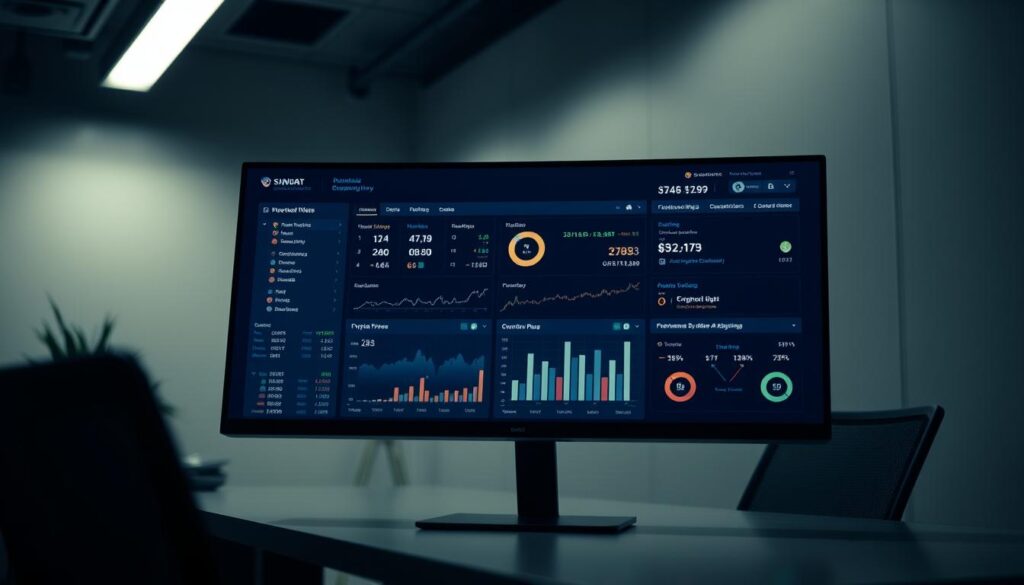
Comprehensive Data Feeds and Dashboards
Premium services deliver live updates across global markets. Users track price shifts, liquidity pools, and wallet activity through unified interfaces. Below shows how top platforms compare:
| Feature | Token Metrics | TradingView |
|---|---|---|
| Real-time Signals | AI-driven alerts | Manual charting |
| Data Sources | 850+ exchanges | 70+ brokers |
| Custom Alerts | Protocol changes | Price thresholds |
Dashboards let traders pin preferred charts like volume oscillators or NFT mint rates. Glassnode users, for instance, monitor miner reserves to predict sell pressure.
Customizable Metrics and Reporting
Strategic investors tailor tracking to specific goals. Key adjustments include:
- Portfolio allocation percentages
- Risk exposure thresholds
- Automated tax calculations
Token Metrics’ AI generates predictive reports using historical patterns. Its machine learning models flag assets with unusual social sentiment spikes. Professionals use these insights to align trades with institutional movements.
Deep Dive into cryptocurrency exchange data analytics tools
Leading platforms reshape how traders navigate digital markets by turning complex signals into clear strategies. Two systems stand out for their distinct approaches: Token Metrics and Nansen. Each offers specialized features that cater to different aspects of market analysis.

Token Metrics, Nansen, and Beyond
Token Metrics combines machine learning with user-friendly interfaces to predict asset movements. Its AI evaluates historical patterns and social sentiment, delivering forecasts through interactive dashboards. Investors get automated portfolio suggestions and risk assessments tailored to their goals.
Nansen dominates on-chain examination with tools like Token God Mode, which reveals wallet activity and DEX trades in real time. Its Smart Alerts transform blockchain patterns into actionable signals, helping users spot trends before mainstream recognition. Both platforms democratize institutional-grade research for retail participants.
Unique Benefits for Traders and Investors
These systems offer advantages beyond basic price tracking. Automated rebalancing suggestions help maintain optimal portfolio allocations. Correlation analysis identifies relationships between digital assets and traditional markets.
Advanced chatbots provide instant answers to complex queries, while smart-money trackers highlight institutional movements. By merging AI predictions with live blockchain metrics, these tools create a competitive edge for both short-term traders and long-term holders.
Real-Time Data Analysis and Trading Insights
Instant market intelligence separates successful traders from reactive participants in today’s fast-paced digital economy. Modern platforms merge blockchain activity with external signals to create dynamic decision frameworks. This fusion helps users spot trends while they’re forming rather than chasing established movements.
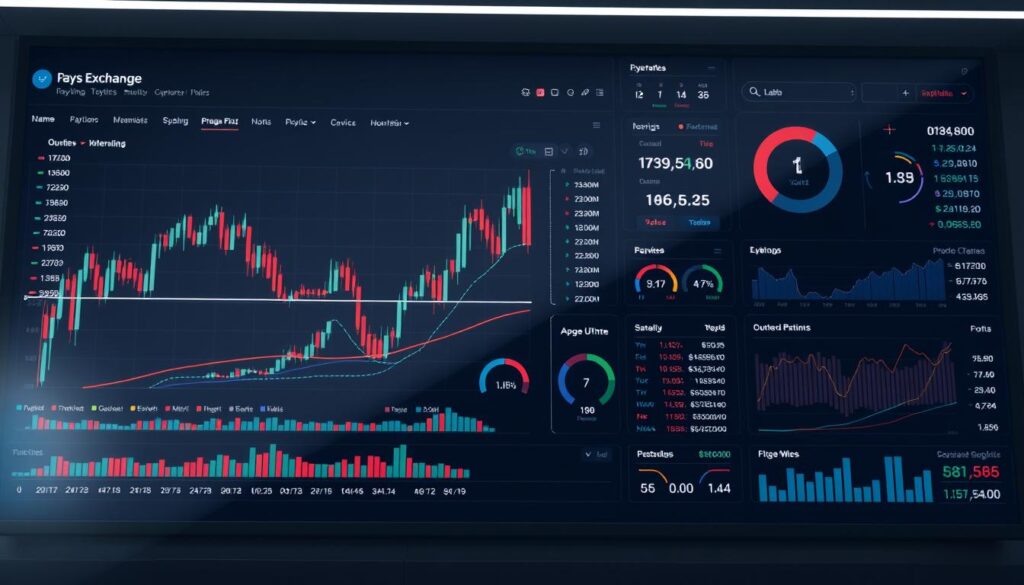
Leveraging On-Chain and Off-Chain Metrics
Blockchain networks reveal hidden patterns through metrics like active wallet counts and transaction finality speeds. These on-chain signals show whether networks are gaining users or facing congestion. A surge in new addresses often precedes price rallies, while slowed transaction times may indicate sell pressure.
External factors like social media buzz and traditional market shifts complete the picture. Advanced systems track Reddit sentiment spikes alongside exchange deposit trends. This dual approach helps traders distinguish between temporary hype and sustainable growth.
Machine learning models process these combined signals to generate predictive alerts. Some platforms flag assets showing unusual correlations – like rising Google searches paired with stablecoin inflows. Real-time notifications about whale wallet movements or protocol upgrades let traders act before major price swings.
Sophisticated strategies emerge from this data fusion. Arbitrage bots exploit price gaps across platforms, while liquidity heatmaps guide entry points. By balancing blockchain fundamentals with broader market forces, traders turn volatility into calculated opportunities rather than risks.
Role of Analytics in Enhancing Crypto Trading Strategies
Modern trading approaches thrive when gut feelings meet hard numbers. Advanced systems transform raw market patterns into structured plans, helping users balance risks and rewards. These platforms remove emotional bias by highlighting trends through mathematical models and historical comparisons.
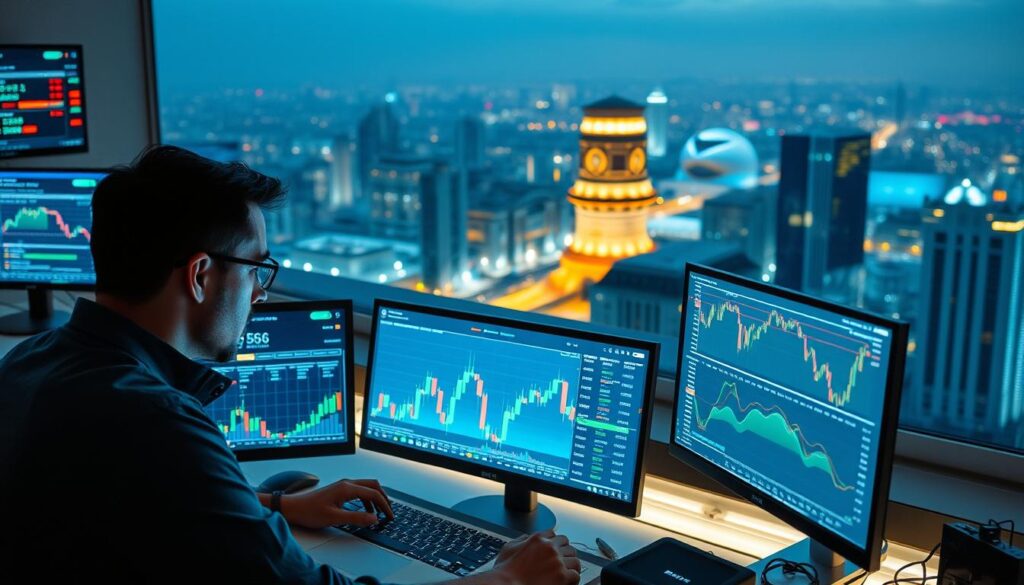
Risk management tools calculate position sizes based on volatility and asset correlations. For instance, a sudden price drop triggers alerts suggesting portfolio adjustments. Backtesting features let traders simulate strategies using years of historical behavior – revealing what works before real money gets involved.
Diversification becomes smarter with correlation charts showing how assets move together. A balanced portfolio might mix stablecoins with trending altcoins, guided by analytics. Technical indicators like moving averages or RSI levels pinpoint entry points, while project health checks assess developer activity and community growth.
Automated systems execute trades when preset conditions align, like social sentiment spikes paired with volume surges. Performance dashboards track success rates and drawdowns, highlighting areas for improvement. This cycle of testing, executing, and refining turns speculation into calculated action.
By merging real-time alerts with deep market analysis, traders make informed decisions faster. The result? Strategies that adapt to shifting conditions while maintaining clear risk parameters.
Integrating Blockchain, DeFi, and NFT Metrics
The digital economy’s next frontier lies in merging decentralized technologies with actionable intelligence. By combining blockchain performance stats, DeFi protocol health checks, and NFT collection trends, traders gain multidimensional market perspectives.
Tracking Digital Collectibles and Asset Movements
Specialized platforms like CryptoSlam rank NFT collections using rarity scores and sales velocity. Investors monitor token flows between wallets to spot accumulation patterns before major price shifts. Floor price alerts help collectors capitalize on market dips across leading NFT marketplaces.
Blockchain explorers like Etherscan reveal hidden transaction details. Real-time dashboards map how tokens move between exchanges, liquidity pools, and institutional wallets. These insights help predict volatility triggered by large transfers.
Unifying Decentralized Market Signals
Platforms like DefiLlama aggregate metrics from hundreds of DeFi protocols, tracking TVL fluctuations and yield opportunities. Cross-chain data aggregation techniques compile information from Ethereum, Solana, and other networks into unified reports.
Advanced systems correlate NFT marketplace activity with token performance. This reveals connections between digital art trends and altcoin movements. By blending blockchain metrics with DeFi yields, traders build strategies anchored in interconnected market forces.
The future belongs to those who synthesize these fragmented signals into coherent strategies. As decentralized ecosystems evolve, integrated metrics become the compass for navigating Web3’s complexity.



